Initiatives in the OKR Model
Let’s explore in this post the Initiatives in the Objective and Key Results model
Intro
OKRs Initiatives
Second article on the OKR model . This time, we will explore the initiatives. They are not explicitly part of the model:
Let’s start with a reminder on the model itself:
- Objective : where are we going, more precisely, where we want to be in a certain time horizon?
- Key Result : how do we plan to get there and what does achieving our goal mean?
To make this model executable, we are missing the what. Initiatives are the action plan associated with this goal.
Two Types of Key Results
Before talking about initiatives, let’s start by taking a detour in the literature of OKRs. There are two types of key results:
Outcome-based Key Result
They are a measure of progress against Kpis. Usually, they are expressed as follows: from x to y .
Project-based Key Result
They are generally either achieved or not. They are also expressed as a percentage of completion from 0 to 100%. It is not a task but it may look like it. It is even more than a project, it is an important milestone for the achievement of the objective. The keywords used to define this type of results are often : launch, roll out, create …
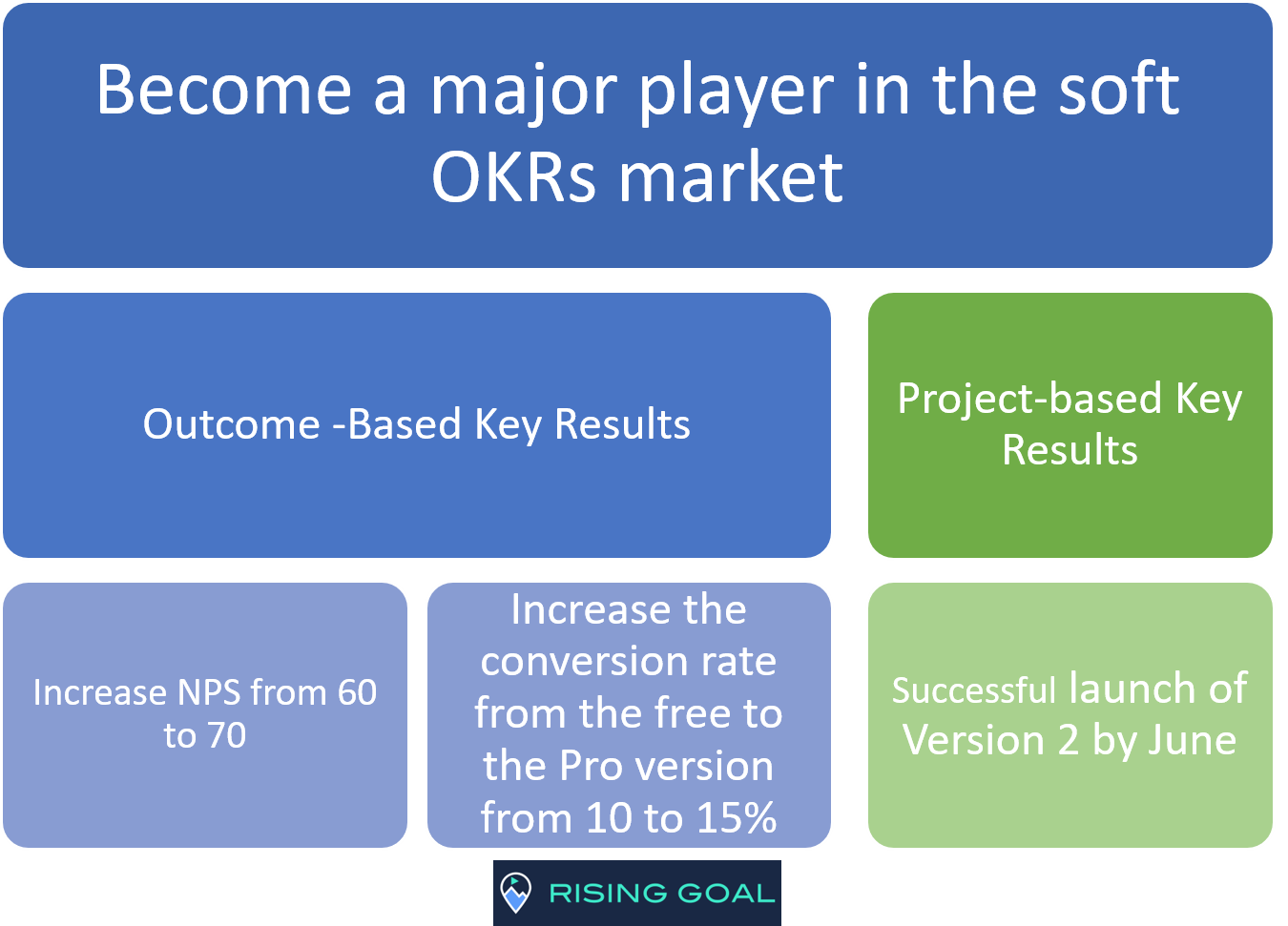
Example of an outcome-based key result
Increase the conversion rate from the free version to the Pro version from 10 to 15%
Example of a project-based key Result
Successfully launch V2 in June
So, rather outcome or project based?
This distinction has a virtue: it reminds us that not all the results are project-based! The negative side is that it opens the door to project-based key results. Concretely, when you start an OKR program and already have a roadmap, the risk is just to reformulate the roadmap into project-based key results. That’s it, we switched to OKRs but nothing changes! It almost always works!
In this regard, good practices recommend a good mix between two types of results. Personally, I prefer to focus more on the outcome-based than the project-based key results. More, the notion of project-based key surprised me at first. And this is where the initiatives come in.
Initiatives
An initiative is an action that should allow us to move towards our goal. A project-based key result can therefore be seen as an initiative.
The difference is the commitment behind one or the other.
For key result, the commitment is strong and visible. While the initiative is not. An initiative is only a means of achieving an objective, so as long as it is achieved …
At this stage, it is up to you to decide whether to use the project-based key results or initiatives. It depends on the level of engagement desired.
Finally, a key result may itself have its own action plan.
On the diagram on the right, you can see the initiatives in the enriched OKR model.
And in the example below, there is a goal with a mix of key results of both types. The first two key results are outcome-based. The first is enriched with initiatives.
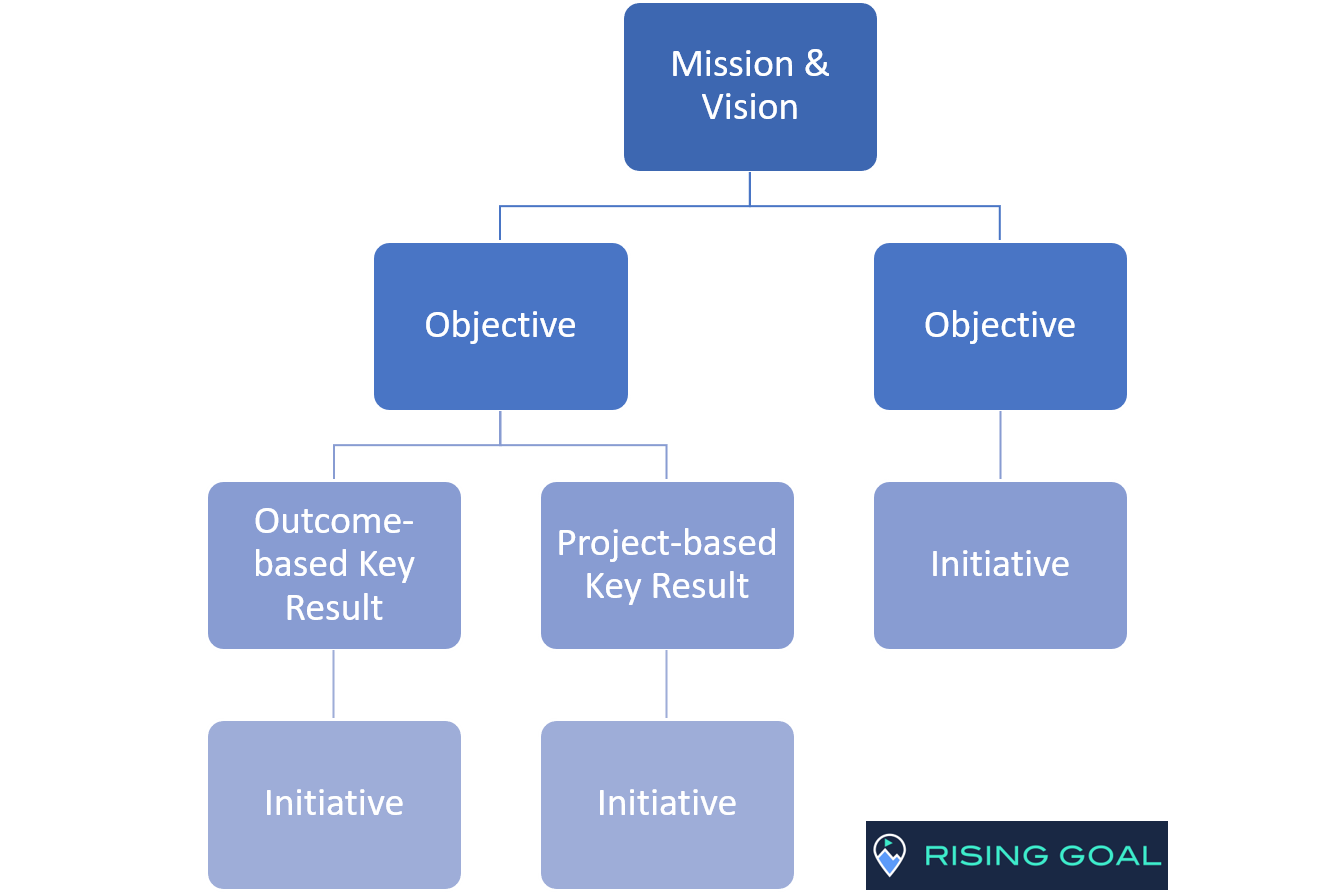
For Example
Objective
Become a major player in the soft OKRs market by the end of the year
Key Result #1
Increase NPS from 60 to 70 by the end of the quarter.
Initiatives
- Launch an A / B testing campaign of the onboarding journey by may
- Implement a Product Tour with service x
Key Result #2
Increase the conversion rate from the free to the Pro version from 10 to 15% by september.
Key Result #3
Successful launch of Version 2 by june.
OKR Examples
You can find this and other examples in our saas solution
Enriched OKR Model
Benefits of the initiatives
In a way, the initiatives are part of the OKR model. But beyond that, they, above all, make the link between strategy / tactics and operations. This is what ensures the proper execution and monitoring of it. These are both key points.
The objectives thus become a factor of organization and prioritization of the daily work of the teams.
Objective and Product Roadmap
As mentioned previously, one of the pitfalls that we find in coaching when setting up OKRs is the revamping of the roadmap into OKRs. With the notion of initiative, the distinction between the two become obvious. The temptation to reverse engIneer the existing roadmap is more visible!
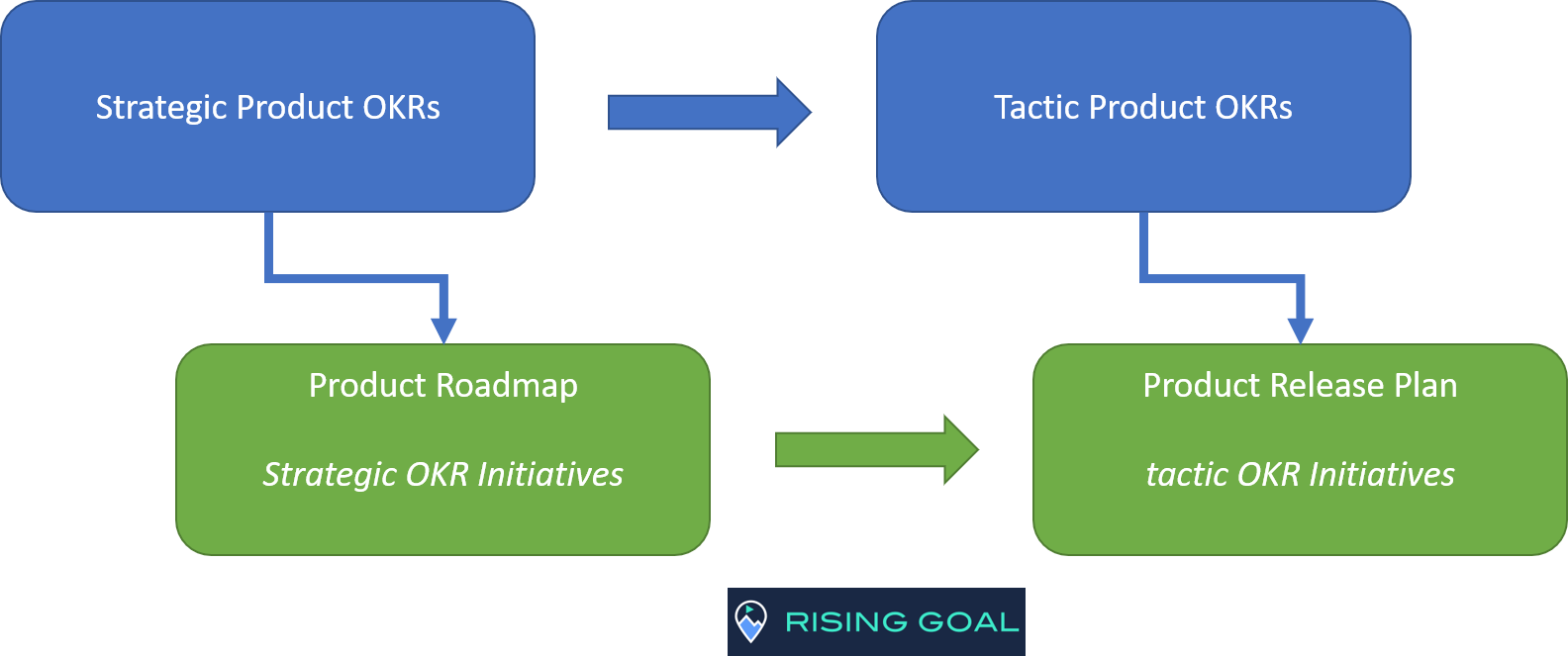
Objective and agility
OKRs are making a strong comeback to the corporate scene. In large part due to the agile transition that reaches its glass ceiling. On the one hand, we need strategic thinking. And this, even in a context of change and uncertainty, no matter what. If only to plan a minimum and be able to invest in the core business in the medium term. Or to explore future business models.
The OKRs approach is particularly suited to the time horizons it offers: typically one-year cycles for strategic objectives. And quaterly for the tactical objectives (we more and more find a duration of four months). It is not imposed by the method, but the framework allows such a cadence.
This allows the strategy to be viewed not as a five-year plan set in stone but as a sliding window of reflection and projection. This makes it possible to review and adjust of course the tactics, but also the strategy.
But the real agility in this method lies precisely in the initiatives.
Imagine that the key result is, as in our example, the production of the version 2 of our product, therefore project-based. The commitment is strong because it is an expected and visible result. What is more, this result is binary: passed or failed on the target date. If there is any change, we are blocked by this commitment.
Now consider a result such as an increase in Net Promoter Score , not that I am a fan of this indicator. In terms of initiative, this opens the doors to new functionalities (and therefore the v2 of the product), work on the User experience , improved support, improved onboarding, …
The list of possible initiatives is now growing. We will be able to start on an initiative and test it. That is to say, check its impact on the result. Possibly change the initiative if this has no impact. This brings us closer to the techniques of Lean startup.
You can be agile on initiatives and stay on target. The OKRs are stabilized, unlike the roadmap which is becoming more scalable.
Conclusion
In this article, we saw that :
- The place of the initiatives in the OKR model,
- They play an essential role in the proper execution and monitoring of strategy and tactics,
- They make it possible to stabilize the OKRs while remaining very agile at different levels (strategic / tactical).
Explore the full Rising Goal Model
Our solution has a complete model from strategy to execution, with Strategy, OKR, KPI & initiatives!
What’s next?
Adding Assumptions to our Objectives and Key Results Model
Our next post will show how to enrich our model of assumptions. When setting objectives, we make hypothesis. Our decision is based on a scenario of what we believe could happen in the next 6 months or the next year. It is useful to follow those assumptions when reviewing our OKR and understand why we are acheiving our objectives or not. This allows for a more factual conversation with the goal owners.
Related Posts
OKR Cycle
OKR cycle will allow you to define and organize the life cycle of your OKRs in your organization. Set the medium-term and short-term goals.
OKR Hypothesis
In this article, we will see how hypothesis can enrich the OKR Model by helping continuous improvement and making better decisions.

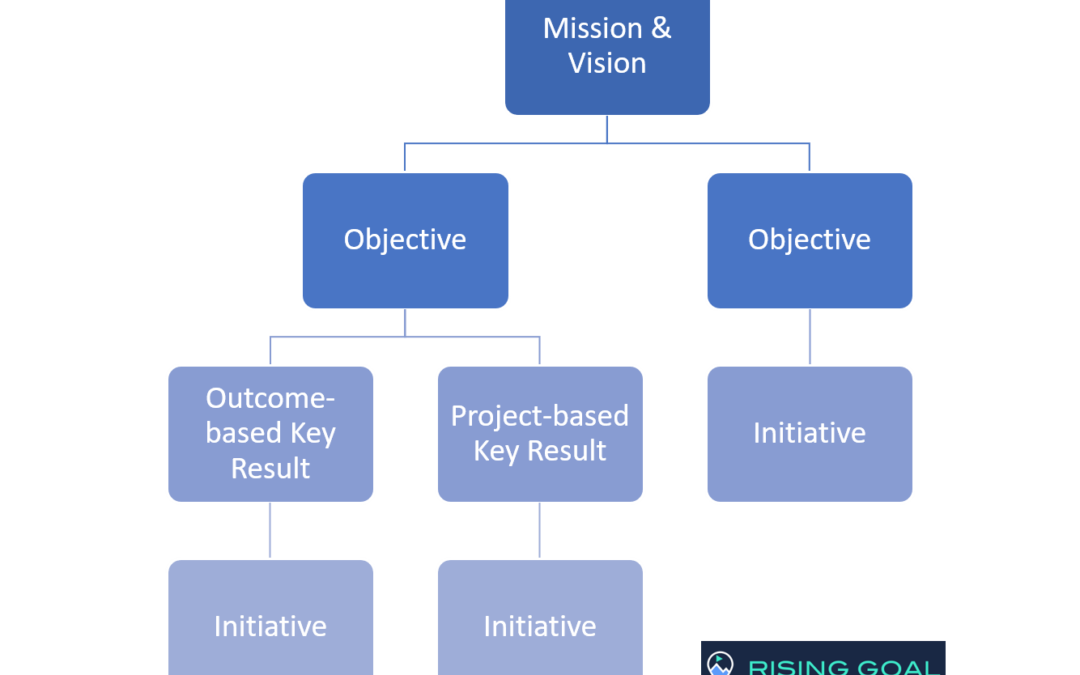

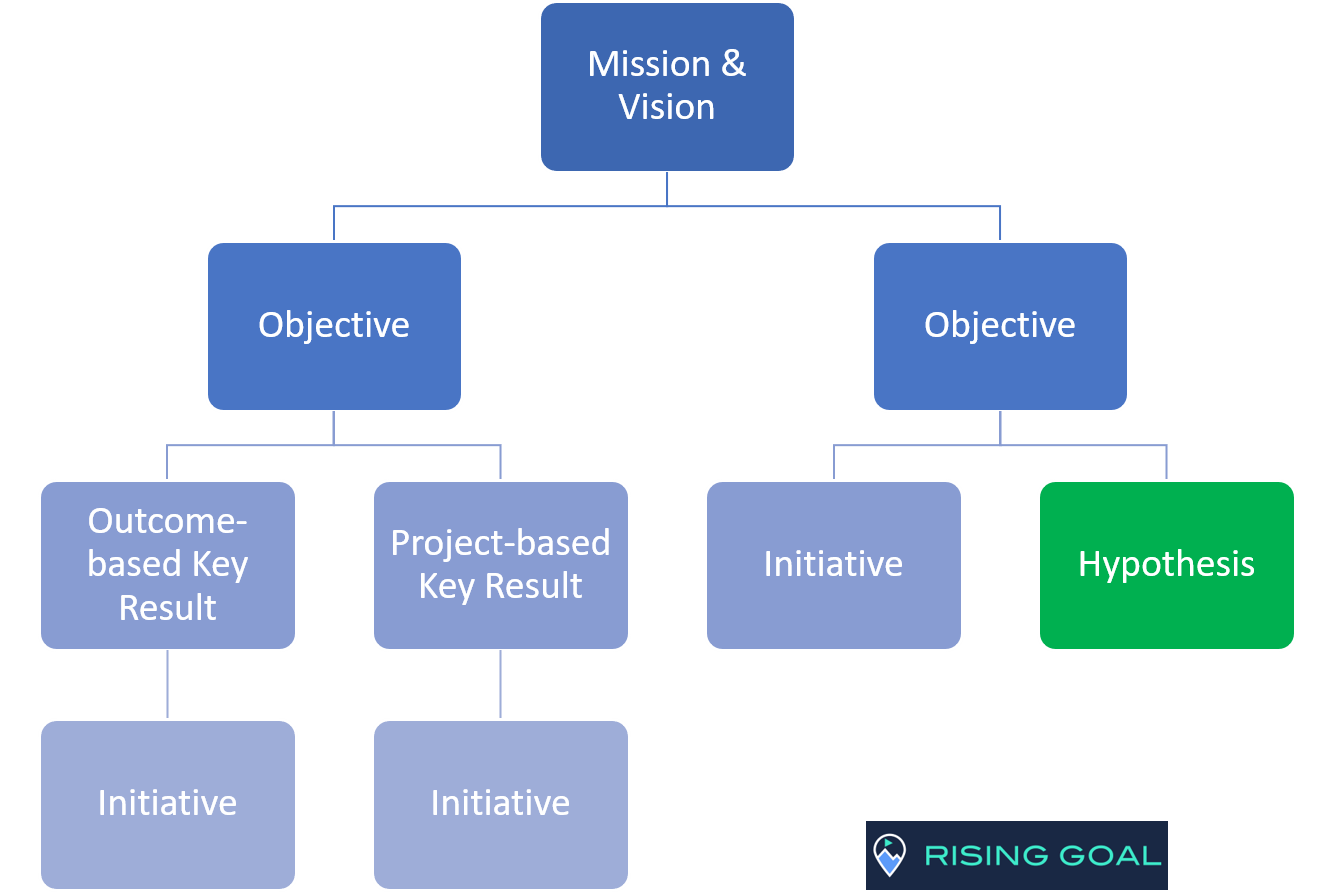



Recent Comments